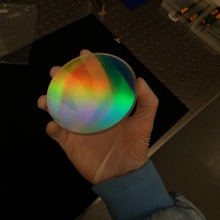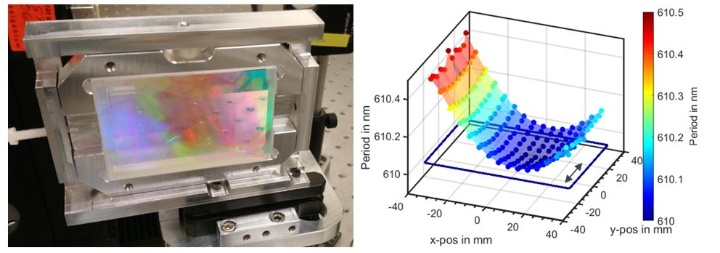The IFSW has recently published a paper on a setup that allows to measure the period of optical gratings with an excellent accuracy of ± 15 picometres (± 0.015 nm) and with a high spatial resolution which allows to determine the spatial variation of the period of the grating on a substrate (also known as period chirp). This novel setup is ideally suited for the analysis of pulse compression gratings, where a spatial variation of the period can be of great disadvantage. The figure below shows a photo of a pulse compression grating (left) and the measured distribution of the period of the grating (right). The typical parabolic increase of the period towards the edge, which is due to the production of the grating by laser interference lithography (LIL), is clearly seen.
This setup extends the possibilities of the IFSW to characterize refractive and diffractive optical components. Furthermore, it can be used to calibrate lithographic setups that are developed with the aim of eliminating the period chirp in order to be able to produce spatially homogeneous gratings.
More details may be found in the following paper:
Florian Bienert, Christoph Röcker, Thomas Graf, and Marwan Abdou Ahmed, "Simple spatially resolved period measurement of chirped pulse compression gratings," Opt. Express 31, 19392-19403 (2023). https://doi.org/10.1364/OE.489238
Contacts: Dr. Marwan Abdou Ahmed and M.Sc. Florian Bienert



